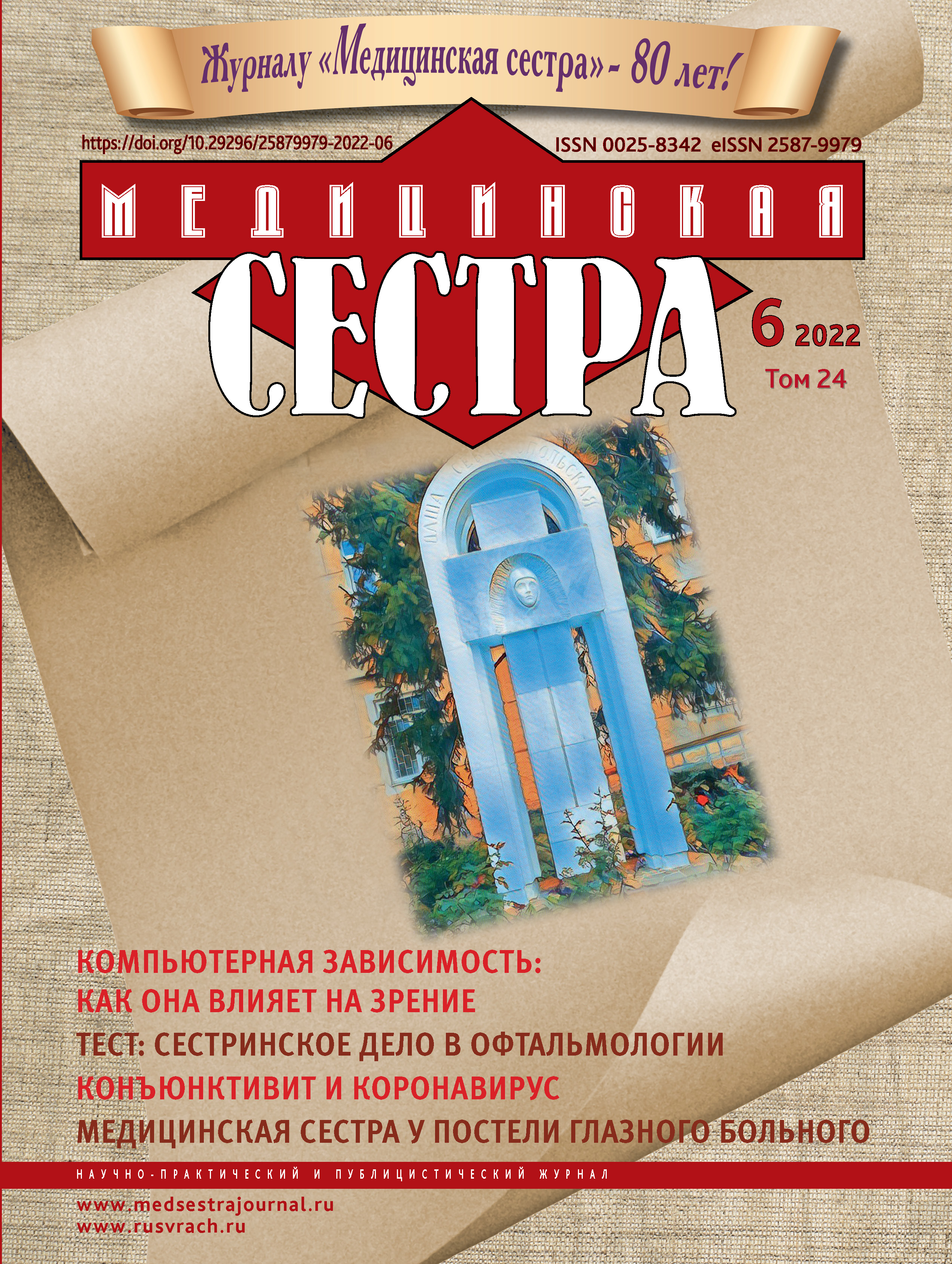Diabetes mellitus, diabetic retinopathy: possibility of using BioChaga and BioDihydroquercetin in complex prevention of disease complications
- Authors: Usoltseva O.N.1, Dedova N.G.2
-
Affiliations:
- Irkutsk State Medical University
- Tverskaya Optika
- Issue: Vol 24, No 6 (2022)
- Pages: 26-29
- Section: Prevention issues
- URL: https://journals.eco-vector.com/0025-8342/article/view/114004
- DOI: https://doi.org/10.29296/25879979-2022-06-06
- ID: 114004
Cite item
Abstract
Objective of the study. To study the possibility of application of BioChaga and BioDihydroquercetin in the complex prophylaxis of complications of diabetes mellitus and diabetic retinopathy in particular.
Material and methods. Analysis of literature data, reflecting the possibility of using drugs BioChaga and BioDihydroquercetin in complex prophylaxis of diabetes mellitus and diabetic retinopathy was carried out.
Results and discussion. The progression of diabetes is associated with vascular lesions in the form of macroangiopathies and microangiopathies. Socially significant vascular complications of diabetes mellitus are retinal microangiopathy (retinopathy) and/or diabetic macular edema, which lead to progressive vision loss. These scientific studies show that dihydroquercetin and chaga have a therapeutic effect by blocking links in the pathogenesis of the disease.
Conclusion. Combined administration of BioChaga and BioDihydroquercetin may be promising in complex prevention of complications of diabetes mellitus and development of diabetic retinopathy.
Full Text
About the authors
Olga Nikolaevna Usoltseva
Irkutsk State Medical University
Email: olga.usolceva1972@mail.ru
Candidate of Medical Sciences, rheumatologist
Russian Federation, IrkutskNatalia Gennadyevna Dedova
Tverskaya Optika
Author for correspondence.
Email: olga.usolceva1972@mail.ru
head of the diagnostics room, ophthalmologist
Russian Federation, TverReferences
- Clinical guidelines. Type 2 diabetes mellitus in adults. 2022. 251с.
- Lin J., Thompson T.J., Cheng Y.J. et al. Projection of the future diabetes burden in the United States through 2060. Popul Health Metrics. 2018; 16(9). https://doi.org/10.1186/s12963-018-0166-4
- Dedov I.I., Shestakova M.V., Vikulova O.K. et al. Epidemiological characteristics of diabetes mellitus in the Russian Federation: a clinical and statistical analysis according to the register of diabetes mellitus as of 01.01.2021. Diabetes mellitus. 2021;24(3):204–221. https://doi.org/10.14341/DM12759
- Shen H, Zhu WK, Lu Z, Zhou HC. Hotspot Analysis of Traditional Drugs in Diabetes Treatment Literature. Chin J Integr Med. 2021;27(4):304–312. doi: 10.1007/s11655-020-3322-1.
- Algorithms of specialized medical care for patients with diabetes mellitus. Edited by I.I. Dedov, M.V. Shestakova, A.Yu. Mayorov. - 10th ed. (supplemented). М.; 2021. doi: 10.14341/DM12802.
- Song P, Yu J, Chan KY, Theodoratou E, Rudan I. Prevalence, risk factors and burden of diabetic retinopathy in China: a systematic review and meta-analysis. J Glob Health. 2018 Jun;8(1):010803. doi: 10.7189/jogh.08.010803.
- Khan A, Petropoulos IN, Ponirakis G, Malik RA. Visual complications in diabetes mellitus: beyond retinopathy. Diabet Med. 2017;34(4):478-484. doi: 10.1111/dme.13296.
- Clinical recommendations of the Ministry of Health of the Russian Federation (2013 - 2017). Diabetes mellitus: diabetic retinopathy, diabetic macular edema. 2013. 26c.
- Pavlov V.G., Sidamonidze A.L., Petrachkov D.V. Modern trends in screening of diabetic retinopathy. Bulletin of Ophthalmology. 2020; 136(4): 300–309.
- Nien C.W., Lee C.Y., Chen H.C. et al. The elevated risk of sight-threatening cataract in diabetes with retinopathy: a retrospective population-based cohort study. BMC Ophthalmol. 2021; 21(1): 349. doi: 10.1186/s12886-021-02114-y.
- Peng, H., and Shahidi, F. (2020). Bioactive compounds and bioactive properties of chaga (Inonotus obliquus) mushroom: a review. J. Food Bioact. 12: 9–75.
- Вalabolkin MI, Nikishova MS, Volkova AK et al. The use of antioxidants from the flavonoid group in the treatment of diabetic retinopathy in type 2 diabetes. Problems of endocrinology. 2003. 49(3): 3-6. doi: 10.14341/probl11577.
- Terekhov R.P., Selivanova I.A., Zhevlakova A.K. et al. Comparative Study of Wound-Healing Activity of Dihydroquercetin Pseudopolymorphic Modifications. Bulletin of Experimental Biology and Medicine. 2021;170(4):444-447. doi: 10.1007/s10517-021-05083-w
- Sunil C., Xu B. An insight into the health-promoting effects of taxifolin (dihydroquercetin). Phytochemistry. 2019;166: 112066. doi: 10.1016/j.phytochem.2019.112066.
- Usoltseva ON, Olennikov DN, Potupchik T.V. Evaluation of the quality and biological activity of the extract of birch mushroom chaga «BioChaga». Pharmacy, 2022; 71 (2): 33–40.
- Usoltseva O.N. Prevention of accelerated aging and «diseases of civilization» with natural geroprotectors BioChaga and BioDihydroquercetin. Meditsinskaya sestra (The Nurse). 2022; (3): 34–40. https://doi.org/10.29296/25879979-2022-03-07.
- Goroshko O.A., Kukes V.G., Prokofiev A.B., Arkhipov V.V., Demchenkova E.Yu. Clinical and pharmacological aspects of the use of antioxidant drugs. International Journal of Applied and Basic Research. 2016. 4-5: 905–912.
- Nedosugova L. V. Antioxidant effects of bioflavonoid diquertin in the complex therapy of type 2 diabetes. Vrach, 2006. 7: 42–45
Supplementary files






